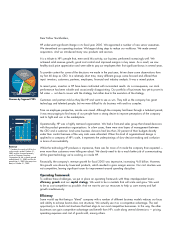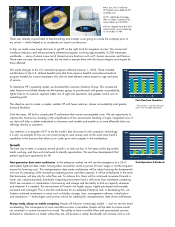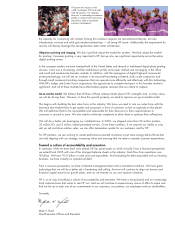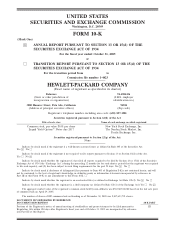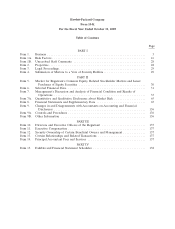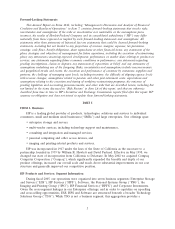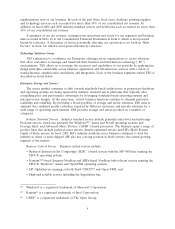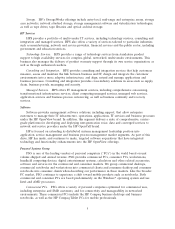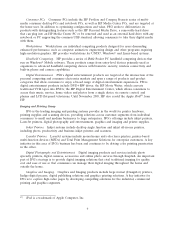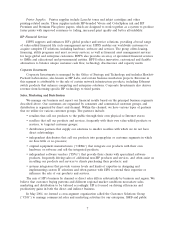HP 2005 Annual Report Download - page 2
Download and view the complete annual report
Please find page 2 of the 2005 HP annual report below. You can navigate through the pages in the report by either clicking on the pages listed below, or by using the keyword search tool below to find specific information within the annual report.
Dear Fellow Stockholders,
HP underwent significant change in its fiscal year 2005. We appointed a number of new senior executives.
We streamlined our operating structure. We began taking steps to reduce our workforce. We made several
acquisitions. And we introduced many new products and services.
It is a tribute to HP’s people that, even amid this activity, our business performed increasingly well. We
achieved solid revenue growth, good cost control and improved margins in key areas. As a result, we saw
healthy stock price appreciation and were able to pay our employees their first significant bonus in several years.
To provide context for some of the decisions we made in the past year, let me share some observations from
my first 60 days as CEO. In a relatively short time, many different groups came forward and offered their
input: investors, customers, partners, employees, financial and industry analysts. It was a mixed picture.
In recent years, investors in HP have been confronted with inconsistent results. As a consequence, our stock
performance has been volatile and occasionally disappointing. Our portfolio of businesses has yet to prove its
full value — not due to issues with the strategy, but rather due to the execution of the strategy.
Customers and partners told us they like HP and want to see us win. They told us the company has great
technology and talented people, but we were difficult to do business with and too complex.
From an employee perspective, morale was mixed. Although the company had been through a turbulent period,
it was encouraging to find many of our people have a strong desire to improve perceptions of the company
and to fight and win in the marketplace.
Operationally, HP was a highly matrixed organization. We had a front-end sales group that shared decisions
with the product generation organizations. In a few cases, there were nine layers of management between
the CEO and a customer. And some business divisions had less than 30 percent of their budgets directly
under their control because of the way costs were allocated. When this kind of organizational design is
applied to a company of HP’s scale, it represents the underpinnings of slow decision-making and confusion
in terms of accountability.
While the technology HP produces is impressive, there was far more of it inside the company than expected —
even more than customers were telling me about. We clearly need to do a much better job of communicating
all the great technology we’re working on inside HP.
Financially, the company’s revenue growth for fiscal 2005 was impressive, increasing $6.8 billion. However,
this growth was driven by lower-end products, which resulted in gross margin erosion. Our cost structure was
not competitive, leaving significant room for improvement around spending discipline.
Operating framework
To address these challenges, we put in place an operating framework with three interdependent levers:
efficiency, growth and our capital strategy. We want to be in markets that will scale and grow. We want
to be as cost competitive as possible. And we want to use our resources to help us save money and fuel
growth simultaneously.
Efficiency
Some would say that being a ”blend” company with a number of different business models reduces our focus
and ability to achieve best-in-class cost structures. We actually see it as a competitive advantage. The real
opportunity is to build cost structures that best align to our most competitive businesses. In this way, the other
businesses can gain competitive advantage and benefit from HP’s scale along several dimensions — pricing,
operating expenses and cost of goods sold, among others.
Revenue by Segment FY05
Revenue
(1) Combines the results of HP for the
twelve months ended October 31,
2002 and the historical quarterly
results of Compaq Computer
Corporation for the six-month period
ended March 31, 2002 and for the
period May 3, 2002 (the acquisition
date) to October 31, 2002.


